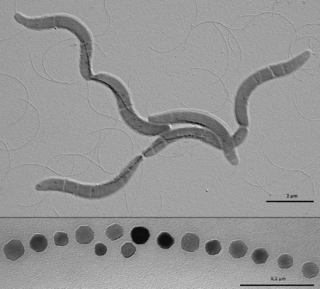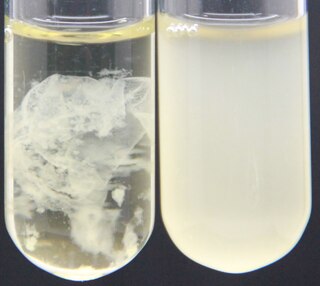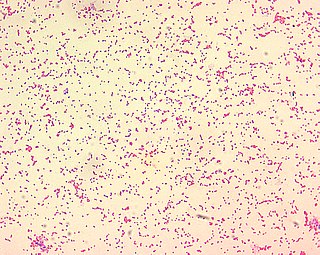
Pseudomonadota is a major phylum of Gram-negative bacteria. Currently, they are considered the predominant phylum within the realm of bacteria. They are naturally found as pathogenic and free-living (non-parasitic) genera. The phylum comprises six classes Acidithiobacilia, Alphaproteobacteria, Betaproteobacteria, Gammaproteobacteria, Hydrogenophilia, and Zetaproteobacteria. The Pseudomonadota are widely diverse, with differences in morphology, metabolic processes, relevance to humans, and ecological influence.

The Rhodospirillales are an order of Pseudomonadota.

The Rhizobiaceae is a family of Pseudomonadota comprising multiple subgroups that enhance and hinder plant development. Some bacteria found in the family are used for plant nutrition and collectively make up the rhizobia. Other bacteria such as Agrobacterium tumefaciens and Rhizobium rhizogenes severely alter the development of plants in their ability to induce crown galls or hairy roots, respectively. The family has been of an interest to scientists for centuries in their ability to associate with plants and modify plant development. The Rhizobiaceae are, like all Pseudomonadota, Gram-negative. They are aerobic, and the cells are usually rod-shaped. Many species of the Rhizobiaceae are diazotrophs which are able to fix nitrogen and are symbiotic with plant roots.

Caulobacteraceae is a family of Pseudomonadota within the alpha subgroup. Like all Pseudomonadota, the Caulobacteraceae are gram-negative. Caulobacteraceae includes the genera Asticcacaulis, Brevundimonas, Phenylobacterium and Caulobacter.

Caulobacterales is an order of gram-negative pseudomonadota within the alpha subgroup.

The Rhodocyclales are an order of the class Betaproteobacteria in the phylum Pseudomonadota ("Proteobacteria"). Following a major reclassification of the class in 2017, the previously monofamilial order was split into three families:

The Brucellaceae are a family of the Gram-negative Hyphomicrobiales. They are named after Sir David Bruce, a Scottish microbiologist. They are aerobic chemoorganotrophes. The family comprises pathogen and soil bacteria
The Holosporaceae are a family of bacteria. The member Holospora is an intracellular parasite found in the unicellular protozoa Paramecium.

The Alteromonadales are an order of Pseudomonadota. Although they have been treated as a single family, the Alteromonadaceae, they were divided into eight by Ivanova et al. in 2004. The cells are straight or curved rods. They are motile by the use of a single flagellum. Most of the species are marine.

Comamonas is a genus of bacteria in the phylum Pseudomonadota. Like all Pseudomonadota, they are Gram-negative bacteria. Comamonas species are aerobic organisms and motile using bipolar or polar tufts of one to five flagella. Comamonas testosteroni and Comamonas kerstersii have been found to cause infections in people.
Zavarzinia compransoris is a Gram-negative soil bacterium that comprises the only current member of the genus Zavarzinia. It is named after the Russian microbiologist Georgi Alexandrovich Zavarzin. Zavarzinia is motile by using a polar flagellum. The cells are curved rod-shaped.
Aminobacter aminovorans is a Gram-negative soil bacteria.
Afipia carboxidovorans is a Gram-negative soil bacterium. It is aerobic, the cells are rod-shaped.
Devosia is a genus of Gram-negative soil bacteria. It is named after the Belgian microbiologist Paul De Vos. They are motile by flagella, the cells are rod-shaped.
Methylobacillus is a genus of Gram-negative methylotrophic bacteria. The cells are rod-shaped.

Ensifer is a genus of nitrogen-fixing bacteria (rhizobia), three of which have been sequenced.
In taxonomy, Ahrensia is a genus of the Hyphomicrobiales. Ahrensia is named after the German microbiologist R. Ahrens. The cells are rod-shaped and motile. They are strictly aerobic.
The Sphingomonadales are an order of the Alphaproteobacteria.
Methylocella tundrae is a species of bacterium. It is notable for oxidising methane. Its cells are aerobic, Gram-negative, non-motile, dinitrogen-fixing rods. Strain T4T is the type strain.
The Marinilabiliaceae are a family of bacteria.









